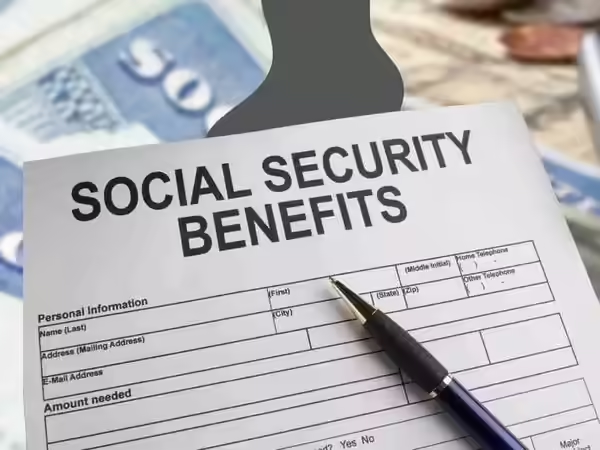It’s the kind of news that stops you in your tracks. Starting July 24, 2025, millions of Social Security recipients across the U.S. may see up to 50% of their monthly payments withheld. The reason? A new policy change from the Social Security Administration (SSA) aimed at recovering overpayments.
Now, if you’re thinking, “Wait a sec, what overpayments? I thought I was getting what I was owed,” you’re not alone. The SSA admits it’s overpaid beneficiaries by a whopping $72 billion from 2015 to 2022. And now Uncle Sam wants that money back.
This article is gonna break it down for you—plain talk, straight from an experienced, Native voice. Whether you’re a retiree, caregiver, or a professional managing benefits for others, this guide will help you understand what’s happening, what it means for your wallet, and what steps you can take to protect your income.

What’s a “Trust Fund Shortfall”?
Think of Social Security’s finances like a household budget. For decades, it collected more in taxes than it paid out in benefits, building up a savings account called a “trust fund.” Now, with more retirees drawing benefits, it’s starting to spend those savings. A “shortfall” is the point, projected to be in the mid-2030s, when those savings run out. Social Security will still have incoming tax revenue to pay a large portion of benefits, but not 100% of what’s promised.
Social Security Shock
| Key Info | Details |
|---|---|
| Effective Date | Withholding starts July 24, 2025 |
| Withholding Rate | Up to 50% for Title II overpayments |
| Applies To | Those with overpayment notices dated April 25, 2025 or later |
| Who’s Safe? | SSI recipients & earlier notices = 10% cap |
| Total Overpaid | $72 billion from 2015–2022 |
| How to Act | Appeal, request waiver, or set repayment plan |
| Tools | SSA Forms & Help |
This isn’t just red tape—this is real money missing from kitchen tables and medicine cabinets. If you or someone you know is affected, don’t sit on it. Read your mail. File your forms. Reach out for help. You’ve worked hard for those benefits. Let’s make sure you keep ‘em.
What Caused This Social Security Payment Shock?
Let’s start with the basics. The SSA provides retirement, disability, and survivor benefits under Title II. When they overpay someone—due to changes in income, living arrangements, or just a straight-up clerical error—they expect that money back.
In years past, they were chill about it, taking back just 10% per check. But things changed fast in 2025. SSA had originally proposed a whopping 100% clawback, but public pushback brought that down to 50%.
Now, anyone who received a new overpayment notice on or after April 25, 2025, is gonna see that larger cut starting July 24.
Who Will Be Affected By These 50% Cuts?
This Is Who Needs to Pay Attention:
- Folks on Social Security Retirement (OASI) or Disability (SSDI)
- Anyone who got a notice of overpayment after April 25, 2025
- People who didn’t respond within the 90-day window

You’re Not Affected If:
- You get Supplemental Security Income (SSI) only
- Your overpayment notice was before April 25, 2025
- You filed a waiver or repayment plan on time
What Can You Do If You Get Hit?
If you get a letter from SSA saying you were overpaid, don’t panic. Here’s a roadmap:
Step 1 — Review the Notice
SSA will tell you how much you owe and why. Double-check everything. Sometimes they mess up.
Step 2 — File an Appeal (If It’s Wrong)
If you think the overpayment isn’t your fault, submit Form SSA-561 to request a reconsideration. You have 60 days to do it.
Step 3 — Request a Waiver
If it was your mistake, but you can’t afford to repay, you can ask for a waiver using Form SSA-632. No penalty if you’re truly struggling.
Step 4 — Ask for Lower Withholding
Use Form SSA-634 to propose a more manageable monthly amount. Even $25/month is possible if it helps keep the lights on.
Step 5 — Get Free Help
Reach out to your local tribal office, nonprofit legal aid, or senior services agency. They often have advocates who understand SSA rules and can help you navigate paperwork.
Step 6 — Stay Informed
Create a “My Social Security” account online at ssa.gov to monitor letters, notices, and benefit changes.
Social Security: Today vs. A Post-Shortfall Scenario
| Feature | Current Situation (Today) | Projected Scenario (Mid-2030s without changes) |
| Benefit Payments | Retirees receive 100% of their promised benefit amount. | Benefits could be reduced to align with incoming tax revenue, estimated at around 77% of promised benefits. |
| Funding Source | Funded by payroll taxes and interest from the trust fund’s savings. | Funded only by ongoing payroll taxes. |
| Retiree Impact | Your monthly payment is predictable and secure. | All beneficiaries would face a uniform reduction in their monthly payments. |
3 Myths About Social Security’s Future, Debunked!
- Myth 1: Social Security is going bankrupt.
- Fact: It can’t go bankrupt. As long as people are working and paying taxes, there will always be money coming in to pay benefits. The real issue is a funding shortfall, not a total collapse.
- Myth 2: The cuts are happening this year.
- Fact: There are no massive, widespread benefit cuts scheduled for this July. The projected shortfall is more than a decade away, giving lawmakers plenty of time to act.
- Myth 3: There’s nothing I can do to prepare.
- Fact: You can take control of your retirement! Focus on your personal savings, use online tools to estimate your future benefits, and stay informed through reliable sources.
Real-Life Story
Marie and Joe, a retired couple from Oklahoma, saw their checks go from $1,100 to $550 overnight. The SSA said they were overpaid five years ago, but they never got notified until this spring. They filed a waiver and are working with legal aid to fight back. They’re not alone. Thousands more across the country are facing similar hardship.
In another case, Lenny, a disabled veteran living on the Navajo Nation, got a notice claiming he was overpaid by $9,000. With his fixed income, a 50% cut would mean choosing between groceries and meds. His tribe’s elder assistance program stepped in, helping him file for a waiver.
Long-Term Outlook
This issue ties into a larger worry: Social Security trust funds are projected to run dry by 2034, which could mean 20% permanent cuts if Congress doesn’t step in. The SSA is trying to tighten up its books before then. But critics say they’re doing it on the backs of vulnerable folks who depend on every penny.
Meanwhile, advocates are urging lawmakers to pass reform that balances recovery with compassion, particularly for seniors, veterans, and Native communities.
FAQs
Q: Can they really take half my check?
Yes, if your notice came after April 25, 2025, and you didn’t respond or appeal in time.
Q: Is there any way to stop it?
Yes. File an appeal or waiver request within your 90-day window.
Q: Will this affect my tax refund or other benefits?
Possibly. SSA can refer debts to the Treasury Department if unpaid. Protect yourself by acting early.
Q: What about SSI-only recipients?
You’re still under the 10% cap, even after the new rules.
Q: Who can help me file?
Try legal aid services, tribal advocacy groups, or call SSA directly at 1-800-772-1213.
Q: Can I set up a payment plan?
Yes. If approved, SSA may accept smaller monthly deductions rather than taking 50% all at once.












